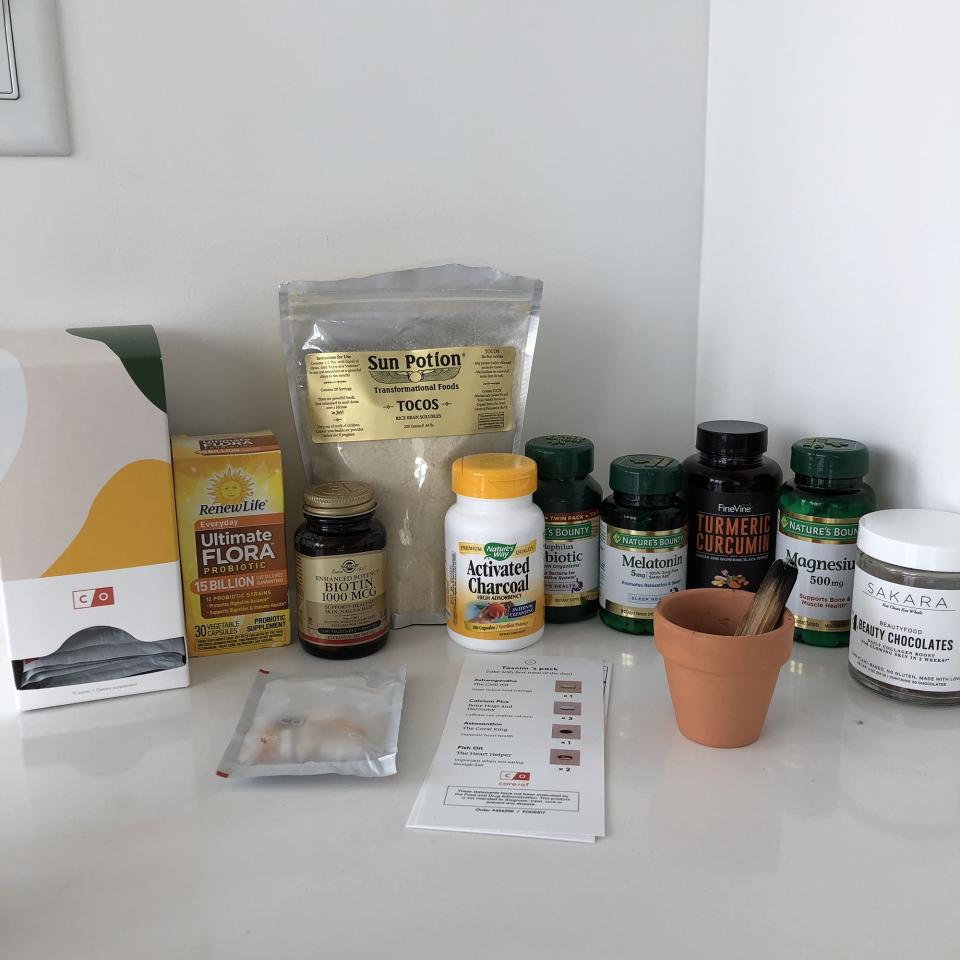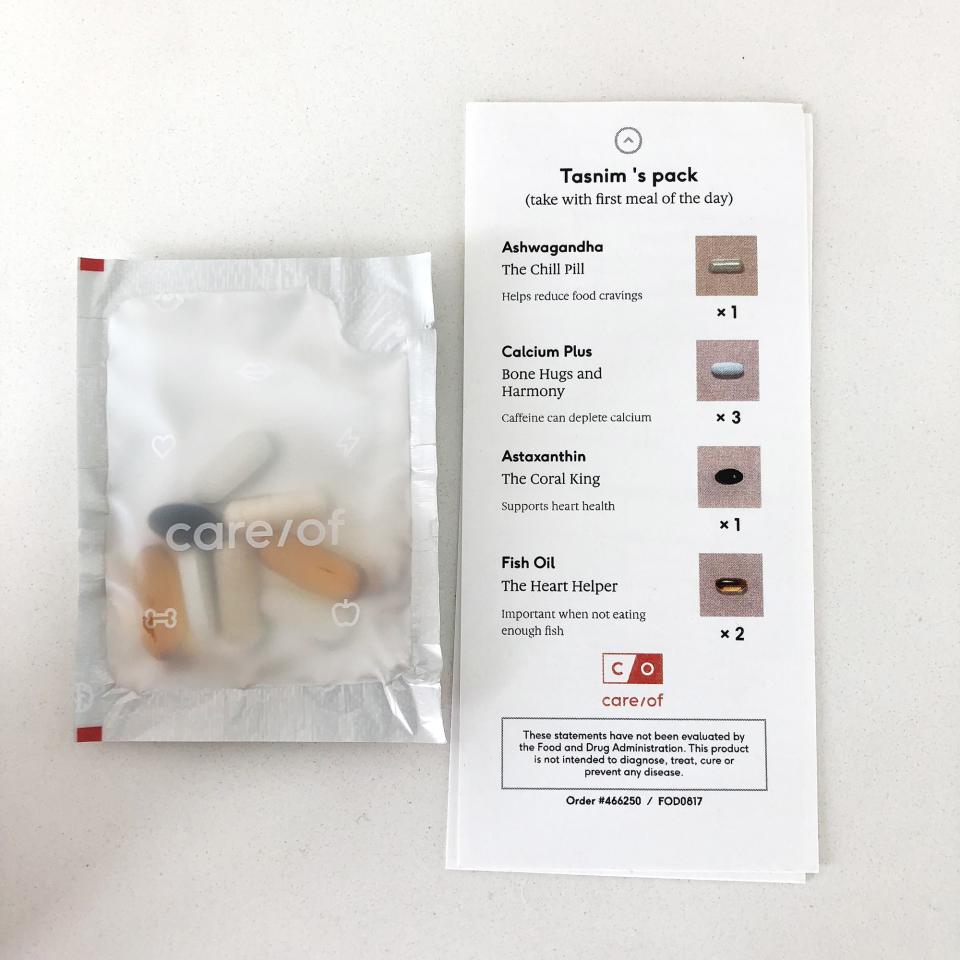Buying Into the Commercialized "Wellness" Industry Left Me Broke (and Unwell)
Over the past few years, I have become enamored with wellness — or rather, a specific idea of wellness.
From my childhood and into a greater part of adulthood, I have struggled with my weight. When I was younger, I was made to believe that I weighed too much, then not enough, which led to an ongoing battle between the two. For most of that time, I'd also suffered from depression and struggled to find ways to cope with my symptoms, unable to afford the aid of therapy and prescribed medication.
Being "well" was all that I had wanted, and so when wellness became a commodity, like a consumable remedy, I bought in. Buying my way into this brand of wellness was ideal; it gave my wellness desires convenient products that could be purchased and consumed at will, streamlining the healing process.
The Distinct Appearance of Wellness's Modern Resurgence
Not so long ago, wellness was typically defined by a general state of goodness in life, happiness, a thing practiced holistically and subconsciously, and definitely not a buzzword as a prevalent as it is in our daily verbiage. Wellness was simply being well. Today, it is less so a state of being and more so a booming global industry with an estimated worth at over $3.7 trillion. It is juices and cleanses, detoxes, powders, crystals, and potions — mostly priced prohibitively, for a limited class of people whose concerns are far beyond simple survival.
At a time when I wanted desperately to shed my own skin for something brighter and renewed, the face of mainstream wellness — most often white women of considerable means who beamed and glowed and conducted themselves in the most ethereal of manners — was enticing to me. Looking at social media and the ways in which so many of my peers were unironically and enthusiastically adopting this performative healthy lifestyle only encouraged me further.
Convenience Isn't a Compromise for Conscious Self-Reflection
I purchased dry brushes and jade rollers, later recommending them to friends and strangers. I put rice solubles in my morning coffee and ate "beauty chocolates" in the hopes of feeling wellness. I held tight to crystals to feel balanced and bought meditation apps. I drank juices and immunity boosters and had a shelf full of supplements and tinctures — from ashwagandha and St. John's wort to elixirs that ensured restful sleep and reduced anxiety. I even bought a juicer for my parents to coax them into my habits since the benefits of juicing touted were by wellness moguls and influencers by and far. (My parents of middle-class means couldn't fathom how two bottles of juice could cost a week's worth of groceries.) If someone recommended a new way of healing and feeling good, I bought it.
I had internalized this distorted view of mental health and denied myself the acknowledgment and care I needed, opting instead for manic consumerism.
As an immigrant woman of color, any talk of mental health and proactive measures to find mental wellness in my community was stigmatized. Depression and anxiety were not considered symptomatic of chemical imbalances coupled with trauma, but rather the characteristic markings of a "crazy" person, whatever that should mean. A "normal" person would never feel these feelings, much less require professional mental help, was the messaging I was led to believe, growing up.
I had internalized this distorted view of mental health and denied myself the acknowledgment and care I needed, opting instead for manic consumerism. Gulping down juices and powdered supplement dusts seemed like a more glamorous way of dealing with my mental wellness rather than reckoning with my reality and the stigmas I associated with it.

The Price of Being "Well"
For years, nothing had the desired effect on me: My anxiety was still rampant, I was still depressed, and I still couldn't sleep at night; I blamed this failure to heal on myself and not on the products endorsed by those who glowed with the version of wellness they espoused. The emotional and physical struggles doubled down because of my inability to feel rejuvenated after all that I had bought and consumed, and so I bought more. The more I bought, however, the less well I began to feel, as credit card bills began to pile up and the cost of attaining the many tools of wellness became financially constricting. I wanted to participate in this movement but felt hopeless in not being able to afford it. I've spent a lot of money on products to feel healthy at a rate that far exceeds my entry-level earnings, and yet there is so much of it that is far beyond my financial reach.
The emotional and physical struggles doubled down because of my inability to feel rejuvenated, and so I bought more. The more I bought, however, the less well I began to feel.
Many mediums and tools of wellness are priced from $20 and go into the thousands, making much of commercial wellness a sizeable lifestyle cost for the average person. According to the U.S. Census Bureau, the median income in the United States was around $59,000 in 2016, but there are sizeable dips and disparities based on race, class, gender, location, and sia ze of family.
The commodification of wellness — of good spiritual, physical and mental health — has limits of who can have access to it because of its costs. The barrier of entry into wellness is money, which is inextricably linked to race and class, and where income opportunity is most often determined by one’s proximity to whiteness. Rarely are those actively participating in and benefiting from the wellness movement people of color.

Even access to the knowledge and practice of how one can achieve wellness is a privilege. The very basics of mental and physical health, such as therapy and organic, “clean” food, is set at a price that is restrictive to working and middle-class people and families. Wellness and particularly wellness advocacy shouldn't just be about ascribing to a particular lifestyle; it should be about asking the crucial question of why wellness is out of the reach of a vast majority of people and finding ways to democratize it.
If wellness is indeed about being well, it can only begin from within, and not dependent on one’s ability to afford it.
My quest for good mental and physical health left me exhausted, overwhelmed, and in a financial deficit. But the fundamental problem was that I believed I could buy my way into being well, that I would not have to put in any time or effort to reflect and heal inwardly. Getting my well-being in order meant that I had to have difficult conversations with myself identifying what it was that I didn't like about myself, what I did love about myself, and why. Why was I unhappy with my body weight and image? Why did I gravitate towards toxic people and situations?
True Wellness Means Examining What Is Actually Making You Unwell
I needed to acknowledge my unhealthy patterns, be accountable for them and let go. I took a few minutes a day to practice mindfulness — another loaded term, but one that simply means checking in with yourself through steady and rhythmic breathing. I am, of course, no professional, but these were free methods that allowed me to partake in wellness without the stress of paying for something that may or may not work, as well as making time to care for myself when I had very little of it in a day. If wellness is indeed about being well, it can only begin from within, and not dependent on one’s ability to afford it.
While many of the accouterments can feel fun to own and use, much of it has been a placebo effect in my experience. This is not to say that choosing to partake in any of these habits or rituals is inherently misguided, or stemming from an idealistic version of wellness — many people find enjoyment or self-care in these fields, interests, and activities, and that is completely valid. But it is so important to remember that we can also begin to achieve well-being with so much as a deep breath and asking ourselves, "How are you doing today?"
Wellness is exactly what it sounds like it should be: being well. Its commodification in a capitalistic market and passive-aggressive antagonism towards many people's existing health-related anxieties and phobias defeats any mission of ascertaining well-being, and the inaccessibility of that positioning can be further damaging towards people's perceptions of what wellness truly could mean for them.
Participating in true, productive wellness can mean going a short walk around your neighborhood, taking a quick nap, finding (or helping someone else find) reliable mental health care, and opening up to those in your community about topics you've previously been silenced on. It can be as simple as finding a minute to breathe with the consciousness and intent to care for and commune with yourself. Ultimately, wellness is the return of love to yourself.
More on taking wellness into your own hands:
The Most Important Form of Self-Care Is Practicing Radical Compassion Towards Yourself
Observing Ramadan Means So Much More to Me Than Just Fasting
8 Ways To Know If You're In A Good Relationship With Yourself
5 women on self-love and learning to love their bodies:

